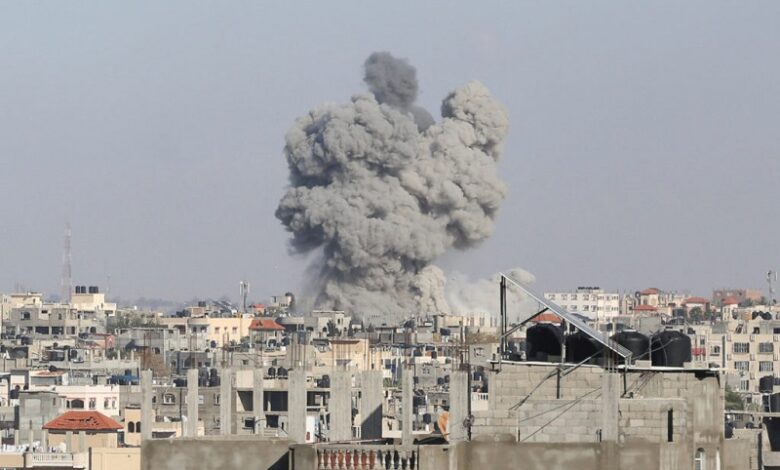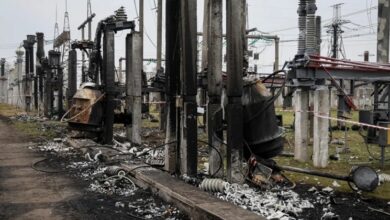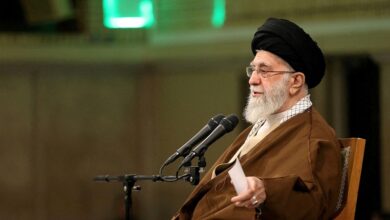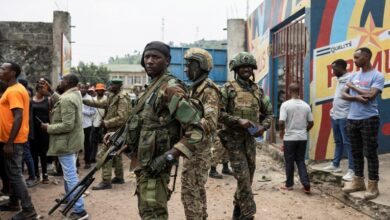Ceasefire Negotiations Fail as Israel-Hamas Tension Escalates

The militant group Hamas has agreed to a ceasefire proposal for Gaza, although Israeli officials have indicated that the terms do not meet their requirements, signaling ongoing tensions as both sides navigate the path to peace.
In a significant development in the seven-month-long conflict, Hamas accepted a ceasefire proposal mediated by Qatar and Egypt. The decision came amidst ongoing Israeli airstrikes in Rafah, a city on Gaza’s southern border, where residents were urged to evacuate.
Hamas chief Ismail Haniyeh conveyed the group’s acceptance of the ceasefire proposal to Qatari and Egyptian mediators. However, Israeli Prime Minister Benjamin Netanyahu’s office expressed reservations about the terms but confirmed its willingness to engage in negotiations.
While Hamas welcomed the proposal, Israel viewed it with skepticism. An Israeli official suggested that the agreement favored Hamas and questioned its sincerity, hinting at potential attempts to portray Israel as the obstacle to peace.
The ceasefire proposal was believed to be a modified version of an earlier offer made by Egypt, with minor adjustments that Hamas found acceptable. However, Israeli officials remained cautious, emphasizing the need for a comprehensive agreement that addresses all concerns.
Despite the differences in interpretation, the United States remained optimistic about the prospects of a ceasefire. State Department spokesman Matthew Miller affirmed that discussions would continue with allies, underscoring the belief that a deal was achievable.
The conflict has taken a heavy toll on Gaza’s population, with thousands of casualties and widespread displacement. The United Nations has warned of an imminent famine in the enclave, highlighting the urgent need for humanitarian relief.
The war between Israel and Hamas erupted in October, triggered by Hamas militants’ attacks on Israeli territory. The violence has resulted in significant casualties and numerous abductions, intensifying the humanitarian crisis in Gaza.Efforts to broker a ceasefire have faced challenges, primarily due to divergent demands from both sides. Hamas has insisted on concrete assurances regarding Gaza’s reconstruction and the release of Palestinian prisoners held by Israel.
Taher Al-Nono, a Hamas official, emphasized the group’s priorities, including reconstruction efforts, the return of displaced Palestinians, and a prisoner exchange. Khalil Al-Hayya, Hamas deputy chief in Gaza, outlined the proposed ceasefire’s phased approach, signaling a willingness to engage in negotiations.Amidst the ceasefire negotiations, Israeli airstrikes continued in Rafah, targeting suspected Hamas positions. The city, considered a stronghold of Hamas militants, has been a focal point of Israeli military operations.
Israeli authorities issued evacuation orders for parts of Rafah, urging residents to relocate to designated safe zones. The airstrikes intensified following the evacuation orders, raising concerns about civilian safety and exacerbating the humanitarian crisis.
Palestinian families in Rafah faced the daunting task of displacement yet again, grappling with uncertainty and fear amid the ongoing hostilities. Many expressed frustration and exhaustion, having endured multiple displacements since the conflict began.
As families evacuated, they recounted the hardships endured during the prolonged conflict and expressed apprehension about their future. The cycle of displacement has taken a toll on Gaza’s residents, leaving them with few options and limited resources to rebuild their lives.Despite the challenges, hopes for a ceasefire persist, fueled by ongoing diplomatic efforts and international pressure to end the violence. Both Israel and Hamas face mounting scrutiny and calls for accountability as they navigate the path to peace in Gaza.






